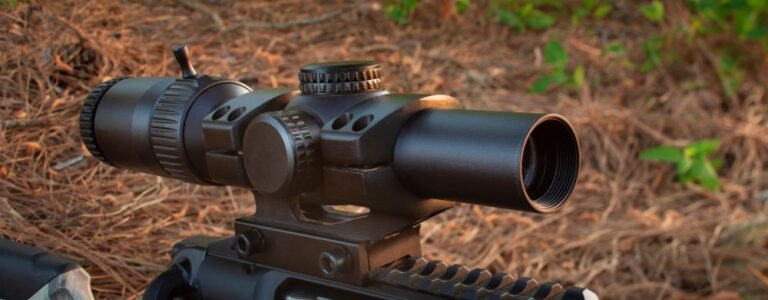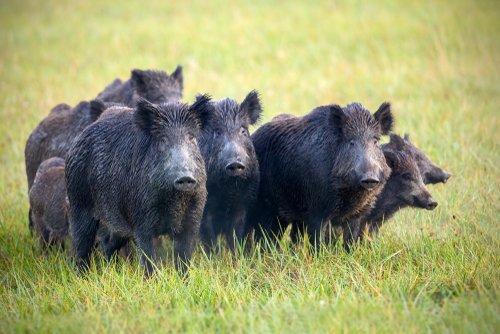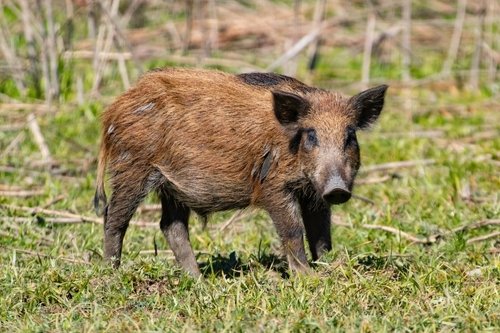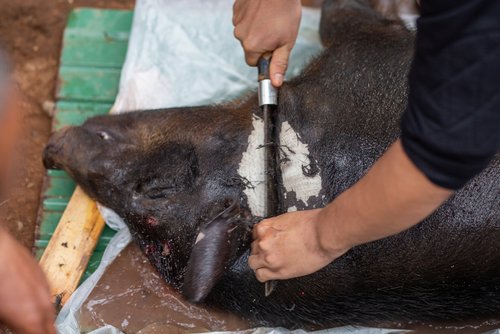The Ultimate Guide to Northeast Hog Hunting Now
Regarding exhilarating outdoor adventures, few activities can rival the thrill of hog hunting. Across the United States, hunters from all walks of life are drawn to the challenge and excitement of pursuing these elusive creatures. With their notorious reputation for being smart, strong, and adaptable, hogs provide an adrenaline-pumping experience that keeps hunters returning for more. In this blog we will discuss Northeast hog hunting.
Hog hunting has gained tremendous popularity recently due to its unique blend of sport and conservation. Feral hogs, descendants of domestic pigs gone rogue, have become a widespread nuisance in many parts of the country.
They cause significant crop damage, destroy natural habitats, and compete with native wildlife for resources. Therefore, hunting hogs offers an exhilarating experience and helps control their population and mitigate their detrimental impact on ecosystems.
Explanation of why Northeast hog hunting is unique and challenging
While hog hunting can be found throughout various regions in the United States, Northeast hog hunting offers challenges that make it particularly enticing for avid hunters seeking a real test of skill. Unlike some Southern states where feral hogs thrive in vast open spaces or dense swamps, the Northeast presents a distinct landscape that demands versatility from hunters. In states like New York or Pennsylvania, where Northeast hog hunting adventures unfold against picturesque forests and rolling hillsides, tracking these elusive creatures requires careful navigation through diverse terrain.
Adapting your strategy on the go becomes crucial when facing off against hogs known for their resourcefulness and keen senses. Furthermore, the colder climate in the Northeast adds another complexity to hog hunting.
Hogs have adapted differently here compared to warmer regions; their behaviors may change during winter months as they seek warmth and food sources become scarce. As a result, hunters must be well-prepared and knowledgeable about the specific challenges posed by the region’s unique climate.
In the next sections, we delve deeper into understanding the Northeastern hog population, habitat and behavior patterns, recommended hunting techniques, essential gear for a successful hunt, safety considerations, legal regulations, culinary delights from a successful hunt, and conservation efforts to manage these intelligent creatures. Get ready to embark on an exciting journey into the heart of Northeast hog hunting!
Insight into the history and origin of feral hogs in the region
When understanding the history and origin of feral hogs in the Northeast, we must step back. It all began with early settlers who brought domesticated pigs for their livestock needs.
Over time, some pigs managed to escape or were intentionally released into the wild, establishing feral hog populations across the region. In states like New York, where I hail from, feral hogs are believed to have originated from early European settlers who brought them as a food source.
These adaptable creatures quickly adapted to their new environment and started thriving. Their population expanded rapidly due to their high reproductive rate and lack of natural predators.
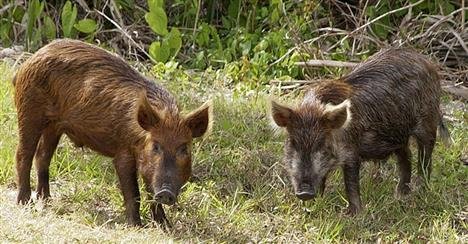
Discussion on the environmental impact of hogs in the Northeast
The presence of feral hogs in the Northeast has had far-reaching consequences on both ecosystems and agricultural landscapes. These voracious creatures are known for their destructive foraging habits, which can wreak havoc on natural habitats and crops.
In forested areas, feral hogs use their strong snouts to root up soil in search of roots, tubers, insects, and small animals. This behavior damages vegetation, disrupts soil structure, and promotes invasive plant species growth.
The disturbance caused by hogs alters forest composition, impacting native plants’ ability to thrive. Moreover, agricultural communities suffer significant losses due to crop damage caused by feral hogs.
Fields planted with valuable crops like corn or soybeans become prime targets for these opportunistic feeders. The economic impact is substantial as farmers face lost revenue and increased expenses for repairing damaged fields.
Through this discussion on the history and environmental impact, it becomes evident that addressing the hog population issue is crucial for the ecological balance and sustainability of the Northeastern region. Stay tuned as we delve deeper into the fascinating world of Northeast hog hunting adventures in our upcoming sections.
Habitat and Behavior of Northeastern Hogs
Description of Preferred Habitats for Hogs in the Region
When it comes to Northeast hog hunting adventures, understanding the preferred habitats of these elusive creatures is crucial. Feral hogs in the region are adaptable and can thrive in various environments, but they have their preferences.
Generally, they are found more commonly in wooded areas with dense vegetation that provides cover and easy access to water sources. The mix of forests, marshes, and agricultural fields throughout states like New York creates ideal conditions for hogs to roam.
One habitat hogs in the Northeast favor is the vast forested regions with abundant oak trees. These trees produce a bountiful supply of acorns during certain times of the year, which serve as a major food source for these voracious eaters.
Additionally, wetlands and swamps provide hogs ample opportunities to wallow and cool off during hot summer days. These areas also offer plentiful plant life that forms a significant part of their diet.
Examination of Feeding Patterns and Daily Routines
Understanding their feeding patterns and daily routines is paramount to successfully tracking down Northeastern hogs while hunting in New York or other regional states. Hogs are opportunistic omnivores known for their relentless appetite. They will devour almost anything, from nuts and berries to insects and even small mammals.
Feeding primarily occurs at night since feral hogs are nocturnal creatures by nature. Under the cover of darkness, they venture out from their hiding spots to search for food using their keen sense of smell.
However, during colder months or periods with less human activity, some hogs may become more active during daylight hours. While searching for food during the night or day (depending on circumstances), hogs will root up the ground with their powerful snouts, causing considerable damage to the landscape.
This rooting behavior not only aids in their food quest but also marks territories and communicates with other hogs through scent markings. Understanding these behaviors can help hog hunters anticipate and intercept their movements effectively.
Hunting Techniques for Northeast Hogs
Different Hunting Methods Commonly Used in the Area
When it comes to hog hunting in the Northeast, hunters employ several tried and true methods to increase their chances of a successful hunt. One popular technique is spot and stalk, which involves scouting for hogs from a distance and then carefully closing the gap before taking a shot. This method requires stealth, patience, and a keen eye for spotting hogs in dense vegetation or open fields.
Another commonly utilized approach is baiting. Hunters strategically place bait such as corn or acorns in specific locations to attract hogs.
Once the hogs become accustomed to feeding at these sites, hunters set up blinds or tree stands nearby to wait for an opportunity. Baiting can be particularly effective when natural food sources are scarce or during colder months when hogs focus more on finding food.
Effective Strategies for Tracking and Ambushing Hogs
Tracking and ambushing hogs requires skill, knowledge, and patience. To track hogs effectively, hunters should look for signs like rooting areas where they have been searching for food, wallows where they cool off in mud baths or tracks left behind in soft soil or mud. These indicators can help lead hunters to areas where hogs are likely present.
Once a promising area has been identified, hunters can set up an ambush by positioning themselves downwind from the hog’s expected approach route. By utilizing natural cover like trees or bushes as concealment and remaining still and quiet, hunters increase their chances of catching hogs unaware.
It’s important not to underestimate the intelligence of these creatures; they have sharp senses that allow them to detect even subtle movements or unfamiliar scents. Hunting techniques play a vital role in Northeast hog hunting adventures.
Whether employing spot and stalk or baiting methods, hunters must adapt to the terrain and understand the habits of hogs to increase their chances of success. By mastering tracking skills and executing a well-planned ambush, hunters can enhance their hunting experience and come away with a thrilling hog-hunting story to tell.
Equipment and Gear for Northeast Hog Hunting
When venturing into the vast wilderness for your Northeast hog hunting adventures, it is crucial to equip yourself with the right gear. These magnificent creatures possess incredible strength and cunning, so being prepared is paramount. Explore the essential equipment needed to embark on a successful hog-hunting expedition.
A Firearm Fit for the Task
To effectively hunt hogs in the Northeast, a reliable firearm is essential. Consider opting for a versatile rifle chambered in .308 Winchester or .30-06 Springfield.
These calibers provide ample stopping power, ensuring clean and ethical kills. Additionally, shotguns with slugs or buckshot can be effective when hunting in dense environments with common close-quarters encounters.
The Ammunition Arsenal
When selecting ammunition for your hog-hunting endeavors in New York or any other Northeastern state, opt for expanding bullets that deliver controlled penetration and maximum energy transfer. Balancing bullet weight and velocity is important to ensure proper terminal performance while minimizing meat damage.
Camouflage: Blend with Nature
Hogs possess an acute sense of smell and sharp eyesight, making camouflage an indispensable component of your hunting gear. Choose apparel that matches the surroundings of your intended hunting area – whether it’s dense forests or marshy wetlands – blending seamlessly with nature’s palette. Additionally, invest in face masks and gloves that neutralize human scent to minimize detection by these crafty critters.
Other Essential Equipment
Apart from firearms, ammunition, and camouflage attire, several other items are crucial for your safety and success during a Northeast hog hunt. A reliable knife is indispensable for a field dressing game after a successful harvest.
Ensure it is sharp and sturdy, capable of handling the task. Additionally, a pair of binoculars will allow you to scout for hogs in the distance, giving you a tactical advantage.
Selecting the Right Gear for Northeast Hog Hunting
Now that we’ve covered the essential gear required for hog hunting in the Northeast let’s delve into some recommendations to assist you in making informed choices when assembling your hunting arsenal.
Firearms: Versatility and Power
While .308 Winchester and .30-06 Springfield are excellent choices, other options, such as 6.5 Creedmoor or .270 Winchester, can serve you well. When selecting your firearm, consider factors like recoil tolerance, range limitations, and personal preferences.
Ammunition: Precision and Performance
Reputable ammunition manufacturers offer specialized loads designed specifically for hunting hogs. Research various bullet options such as Barnes TSX or Hornady SST to find one that balances accuracy, terminal performance, and affordability.
Camouflage: Stealthy Stalking
Brands like Sitka Gear or First Lite provide a wide range of camouflage patterns tailored to different environments prevalent in the Northeast. Choose patterns like Mossy Oak Break-Up Country or Realtree Edge that blend seamlessly with local foliage.
Safety First: Additional Equipment
Never embark on a hog-hunting expedition without proper safety equipment. Essential items include a first aid kit, reliable navigation tools such as GPS or compasses, insect repellent to ward off pesky critters lurking in marshy areas, and water-resistant footwear to tackle muddy terrain. By utilizing this recommended gear list as a starting point while considering your specific needs and preferences as an outdoor enthusiast engaging in hog hunting escapades in the mesmerizing landscapes of the Northeastern United States, you’ll equip yourself for success and maximize your chances of an exhilarating hunting experience.
Safety Considerations for Northeast Hog Hunting
Discussion on potential risks associated with hog hunting
When venturing into the thrilling world of Northeast hog hunting adventures, it’s important to be aware of the potential risks involved. While wild hogs might not possess the ferocity of a grizzly bear or a lion, they can still pose dangers if not cautiously approached.
Feral hogs are known for their sharp tusks and aggressive behavior when feeling threatened or cornered. It is crucial to remember that these animals are strong, resilient creatures capable of inflicting serious harm.
As an aspiring hog hunter in the Northeast, it’s essential to understand and respect the inherent hazards of this pursuit. One of the primary risks associated with hog hunting in dense forests or wetlands is encounters with snakes, poisonous plants, and treacherous terrain.
The Northeast region boasts a diverse ecosystem filled with hidden obstacles that could lead to injury if not carefully navigated. From venomous timber rattlesnakes slithering through the underbrush to poison ivy lurking amidst the vegetation, vigilance is key.
Moreover, uneven terrain combined with slippery surfaces near swamps or riverbanks can result in falls or twisted ankles if one isn’t mindful of their surroundings. Therefore, being aware of these dangers and taking necessary precautions, such as wearing appropriate footwear and staying alert, will significantly reduce the chances of mishaps during your thrilling quest for wild hogs.
Tips on staying safe while navigating through dense forests or wetlands
To maximize safety during your hog hunting in New York or any other Northeastern state blessed with abundant feral hog populations, adopting certain practices while navigating through dense forests or wetlands is crucial. Firstly, equipping yourself with proper attire is paramount—opt for sturdy boots that offer ankle support to protect against uneven terrain and potential snake bites. Additionally, wearing long-sleeved shirts and pants made from lightweight, breathable fabric will shield you from ticks and other biting insects lurking in the undergrowth.
Another important safety measure is to familiarize yourself with the area before embarking on your hunting expedition. Study maps of the region and research potential hazards like bogs or hidden sinkholes that could pose risks during pursuit.
Maintaining situational awareness throughout your hunt is vital – always watch for fallen branches or unstable ground that could compromise your footing. It’s wise to go hog hunting with a partner whenever possible.
Having a hunting buddy enhances the overall experience and provides an extra set of eyes and hands to assist in emergencies or unexpected situations. By adhering to these safety considerations and implementing these tips into your Northeast hog hunting endeavors, you can minimize risks while maximizing the pleasure of this thrilling outdoor pursuit.
State-Specific Laws Regarding Hog Hunting
When it comes to hog hunting in the Northeast, it’s important to brush up on the specific regulations that govern this thrilling pursuit. Each state has its own set of rules and guidelines to ensure wildlife preservation and maintain a sustainable hog population.
Let’s take a brief overview of some key states in the region. For example, New York has designated areas where hog hunting is permitted. These areas often have specific seasons, bag limits, and weapon restrictions.
It’s crucial to check with the Department of Environmental Conservation (DEC) for updated information on regulations before planning your Northeast hog hunting adventures.
Similarly, states like Pennsylvania and Massachusetts also have specific rules for hog hunting, including requirements for licenses and permits.
Licenses, Permits, Seasons, Bag Limits, etc.
Before embarking on your Northeast hog hunting journey, make sure you’re well-versed in the licensing and permit requirements of each state you plan to hunt in. Generally speaking, hunters will need a valid hunting license issued by the respective state’s wildlife agency.
Additionally, some states may require special permits specifically for hunting hogs. When it comes to seasons for hog hunting in the Northeast, they can vary depending on the state and even within different regions of a single state. Fall and winter are popular seasons due to factors such as cooler weather and fewer foliage hindrances.
As for bag limits – which refers to how many hogs you’re allowed to harvest – these can also vary from state to state. Some states may have no bag limits or set a limit per day or season. It’s essential to familiarize yourself with these limits and abide by them accordingly.
Remember that these regulations are put in place not only for conservation purposes but also for safety reasons. By adhering to the laws and guidelines in your chosen hunting areas, you can ensure an ethical and responsible hog hunting experience in the Northeast.
Hog Meat: Culinary Delights from a Successful Hunt
Different cuts of hog meat are available.
One of the most exciting aspects of hog hunting in the Northeast is the reward of indulging in delicious wild boar meat after a successful hunt. The meat from feral hogs is lean, flavorful, and offers a unique taste that sets it apart from domestic pork. Understanding the different cuts of hog meat can greatly enhance your dining experience.
Some popular cuts include tenderloin, ribs, shoulder (also known as Boston butt), and ham. Each cut has its distinct texture and flavor profile, allowing hunters to explore various cooking methods and recipes.
Tips on processing, preserving, and cooking wild boar
Processing and preserving wild boar meat properly is essential to ensure freshness and maintain quality. After harvesting a wild boar, it’s crucial to field dress the animal promptly to prevent spoilage and remove any unwanted organs or glands. Once field-dressed, you can choose between processing the animal yourself or taking it to a professional butcher specializing in game meats.
Proper packaging for freezing is crucial to avoid freezer burn or contamination. Low- and slow methods are often preferred when cooking wild boar due to its leanness.
Slow roasting or braising can help tenderize tougher cuts while retaining moisture. Marinating certain cuts before grilling or smoking can add an extra layer of flavor.
Conservation Efforts to Manage Feral Hogs in the Northeast
Overview of initiatives aimed at controlling feral hog populations
Feral hogs pose significant ecological threats throughout the Northeast region by damaging crops, causing soil erosion, destroying natural habitats for native wildlife species such as ground-nesting birds or amphibians, and negatively impacting water quality due to their rooting behavior. To address this issue, various initiatives have been launched to manage and control feral hog populations.
These efforts often involve collaboration between government agencies, wildlife organizations, and private landowners. Some strategies include trapping and removal programs, aerial shooting operations, and specialized hunting teams to target specific areas where hogs are causing the most damage.
Explanation of how hunters can contribute to conservation efforts
Hunters can play a crucial role in feral hog population control while enjoying their Northeast hog hunting adventures. By participating in organized hunts or pursuing hogs during established seasons, hunters actively aid in reducing hog numbers and minimizing their detrimental effects on the environment.
Additionally, reporting hog sightings or providing data on population densities contributes valuable information for wildlife management agencies to develop effective eradication plans. Hunters need to familiarize themselves with local regulations and guidelines regarding feral hog hunting to ensure they align with conservation goals while enjoying a thrilling outdoor experience.
Conclusion
Northeast hog hunting is an exhilarating outdoor activity and offers the rewarding opportunity to savor the delicious meat that comes from a successful hunt. Exploring different cuts of wild boar meat and mastering various cooking techniques adds a culinary dimension that magnifies the overall experience.
Moreover, participating in conservation efforts to manage feral hogs showcases the responsible stewardship of hunters who understand their role as protectors of nature’s delicate balance. By embracing sustainable practices and contributing knowledge through reporting, hunters can help preserve the environment and the thrill of Northeast hog hunting for generations.

